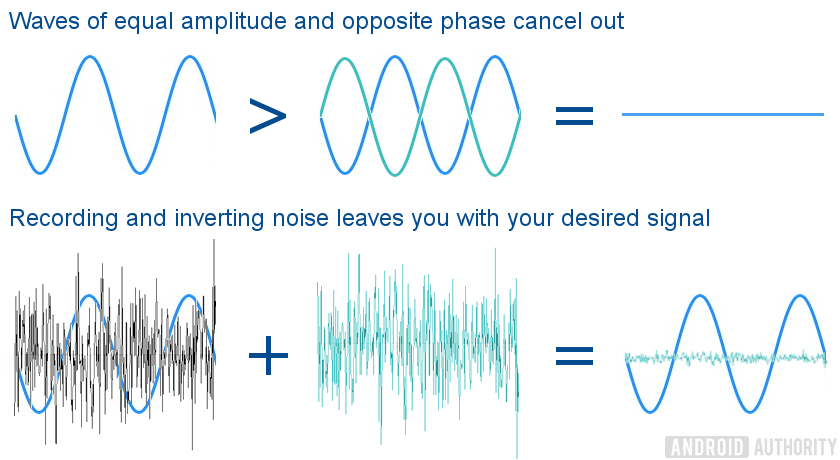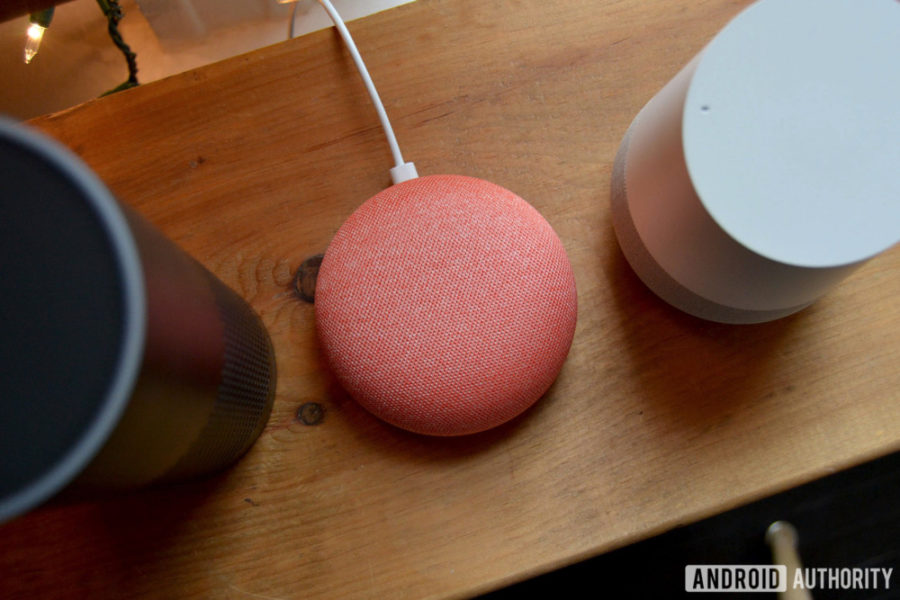The importance of noise cancellation in modern mobile electronics …

Original material
Your smartphone is packed with technology, from processors to modems, and even dedicated components for gyroscope tracking. Audio hardware is also tightly integrated into mobile devices today. One of the technologies already included in our devices, but for some reason not such a popular technology, is support for noise suppression.
While noise cancellation is commonly associated with wireless headphones, it is also a critical element in other gadgets, including your smartphone. It is used in both calls and smart assistants, and is arguably the most important technology in today's gadgets.
What is noise cancellation?
The answer is in the term itself: it's a technology designed to cut out background noise to improve hearing. However, achieving this is not as easy as it seems.
First, let's talk about how it works. One of the basic laws of physics is that sound waves of the same amplitude and frequency, which are in antiphase, are mutually cut off when they are added. In other words, if you take a wave with a peak of 1 volt and combine it with an inverted wave of -1 volt, you get 0 volts. They mutually 'extinguish' each other. In the case of noise cancellation, the theory is that if we can pick up background noise with a microphone, invert the phase of the signal at a specific frequency with a 180 degree delay, and add to the original signal, we can cut out the noise. Pretty simple.

The theory is slightly violated when we move from the theoretical world to the real world. Microphones are not perfect, electronic conversion adds its own noise, and the cutoff phase of the sound wave coming out of the speaker may not match the phase of the noise upon reaching your ear. These systems need fine tuning, but even then you won't hear 100% noise cancellation. Quite common is noise reduction between -20 and -30 decibels, which cuts out background noise from 1/16 to 1/32. A significant indicator.
Narrower frequency ranges allow for a more accurate level of convergence or noise reduction, while wider ranges cover more frequencies but cannot reduce amplitude as much. This is important to consider in order to understand the pros and cons, for example when trying to filter out all audible background noise, or simply cutting out noise around the frequencies of the human voice.

In phone
If you are still calling using your smartphone, then you are likely to notice that the interlocutor's audibility has become much better, and on the other end the sound is clear and pleasant. This is partly due to improvements in call quality, but for crystal clear calls, your phone uses active noise cancellation to eliminate some of the background noise when you hold the phone to your ear. This technology has been used in phones for many years and continues to improve.
In addition to the main microphone for voice recording, your smartphone has additional noise canceling microphones. Recordings from these microphones can be used in the above scenario by cutting out background noise. This same background information can be used to suppress the noise that the microphone 'hears' the microphone you are speaking into when making a call, but by inverting the signal and aligning it before sending the voice packet over your cellular network.
In addition to noise cancellation, information obtained from additional microphones can be used to automatically adjust the call volume based on background noise levels and to attempt to filter out wind blowing into the speaker. Many of these 'chips' are included in smartphones at the level of processors produced by Qualcomm and others, which makes them available on most devices.
Multi-microphone systems also serve another purpose – voice localization for 'smart assistants'. Such a system is necessary to determine the direction of the incoming voice command. This information can then be used to determine what is background noise, even if it is other voices or TV, which is then filtered out to provide the cleanest possible source for voice recognition algorithms.

In accessories
Obviously, a similar pattern applies to smart home devices such as Google Home and Amazon Echo. In addition to determining the direction of the incoming command, these devices use noise reduction and echo cancellation algorithms similar to those found in smartphones. Alexa uses up to 6 omnidirectional microphones, thus offering better speech detection and noise reduction than a conventional smartphone.
Today, noise canceling technology is perceived as a must for Bluetooth – headphones, and for a reason. In addition to blocking out general background noise, filters can be tailored to suit specific headset usage scenarios. For example, fitness headphones don't have to completely block out the noise of cars for the safety of runners, but models designed for home or travel could focus on a wider frequency range.
I was lucky enough to test Qualcomm's Hybrid ANC technology. The proposed structure includes both internal and external microphones, and a feedback loop is created. This actually reduces the overall accentuation of noise compared to an equivalent input-controlled solution, but offers a very stable bandwidth for blocking out a huge spectrum of audible sounds. The demo I tested completely cut off the roar of the jet engine, making it easy to listen to music in noisy environments even at low volumes.
Noise cancellation application scenarios go beyond consumer electronics. Measuring and blocking noise can find applications in industry, for example, for preserving hearing in manufacturing, as well as in medicine – hearing aids.
Noise cancellation in smartphones is underestimated. Many of us use it several times a day without even realizing it. Whether you're making voice calls, accustomed to smart assistants or wireless music playback through headphones, the quality of your favorite services will be dramatically different without this seemingly inconspicuous technology. It opens up a new world of voice-based technology for emerging markets, so we'll hear about it again.
By Robert Triggs
Sometimes we do not notice the development of some technologies, gradually we begin to take them for granted. So it happened with the technology mentioned by the author of the material. But, as you can see from the article, smartphones with its support will subsequently find themselves in a better position due to more confident support for voice assistants and 'smart' devices.
It is quite possible that in this aspect manufacturers will see an additional opportunity for marketing and using famous brands, and we will see devices marked 'ANC by Bose / Sony / Bower & Wilkins', etc. In any case, the technology is useful, the main thing is to find the right approach and adapt to the necessary scenarios. Or will our user experience not lose anything even without noise cancellation in smartphones?
My twitter
The gazebo says goodbye to the readers of AMR until January 9, taking this opportunity I want to congratulate you on the upcoming holidays and wish you an exciting and interesting new year, thank you for your attention and see you soon!
